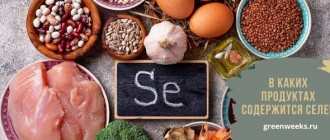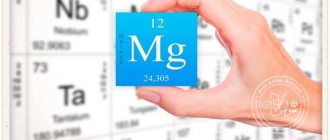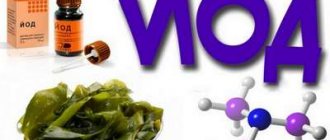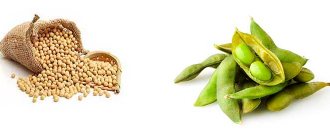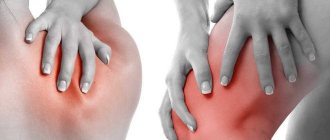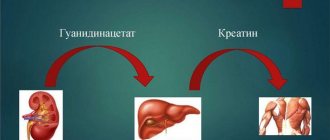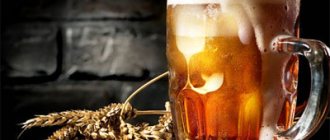What foods are high in zinc and selenium?
Selenium is a microelement essential for life. On average, the body contains more than 10 mg. It is concentrated in the testicles and spermatic cords in men, as well as in the liver, lungs, and spleen. Selenium plays an important role in the human body:
- participates in metabolism;
- interacts with vitamins and enzymes;
- affects the metabolism of hormones, lipids, nucleic acids;
- Helps absorb iodine and vitamin E in the body.
Given its antioxidant properties, it is used as an anticancer agent.
It is found in animal products and fish, but during heat treatment, selenium loses its beneficial properties. Selenium is also found in eggs, nuts and cereals, yeast and corn. Strawberries, blueberries, black currants, and rowan are rich in selenium. There is a lot of this substance in celery, garlic, asparagus, and dill.
We recommend reading: Celery: beneficial properties and contraindications
The greatest amount of zinc is found in seafood, cheese, pumpkin seeds, and legumes
Zinc is important for the following functions:
- formation of male hormones and sperm;
- vitamin E metabolism;
- breakdown of alcohol in the body;
- proper functioning of the prostate.
The adult body contains approximately 2 g of zinc. It is found mainly in the pancreas, liver and muscles. Zinc also contains more than 400 enzymes.
The highest amounts of zinc are in the following foods:
- pumpkin and sunflower seeds;
- sesame;
- meat;
- oysters;
- oatmeal;
- cheese;
- chocolate.
In addition to these products, it is part of mineral water.
Daily consumption rate
It is 10 – 15 mg, increases during pregnancy, with severe psycho-emotional stress, prolonged physical activity.
The daily norm of zinc for women is 10 - 13 mg, the norm of zinc for men should be at least 13 - 15 mg per day.
For infants and newborns, the daily requirement of zinc should be no more than 5 mg, for children under 10 years old - no less than 10 mg, for children under 18 years old - from 8 to 12 mg.
It is recommended that women take at least 15 to 19 milligrams during pregnancy or breastfeeding, and they should increase their serving size of foods containing these micronutrients.
Professional athletes can introduce foods rich in minerals and dietary supplements into their diet. They need to use at least 20 - 35 mg daily.
It is recommended to combine these substances with other minerals, calcium, vitamins B 6, B 12, C.
Foods High in Zinc and Selenium
For normal functioning of the body, it is necessary to receive a certain amount of selenium and zinc daily from food. A lack of zinc will sooner or later affect the process of cell division, immunity, sexual function, vision, and the condition of the skin and teeth. Selenium deficiency will affect thyroid function, immune system, heart muscle, reproductive function, and liver.
Important! An excess of these substances in the body can result in brittle tooth enamel, pathologies of the intestines, stomach, and joint diseases. These chemicals in large quantities are poisonous to the body.
It is worth considering which products contain the most of these substances.
Beans
Beans are an annual plant. It is a source of many vitamins and microelements. Beans contain vitamins C, E, PP, B. Legumes are also rich in magnesium, iron, potassium, calcium, selenium and zinc. Beans are a very popular product among people who are used to taking care of their health, since they have a fairly low calorie content and give strength and energy.
We recommend reading: Products containing potassium: which have the most, table
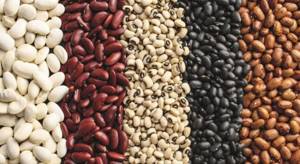
In addition to zinc and selenium, beans contain phosphorus, iron, magnesium, copper
Due to the beneficial properties of the culture, it is used not only in cooking, but also in cosmetology and folk medicine. Lima beans and Turkish beans are especially rich in zinc and selenium. These microelements in beans help maintain the functions of the intestines and stomach, protect against tumors, control blood sugar levels, and are therefore useful in the treatment of diabetes. Beans are recommended to be added to borscht, soups, stews, salads and vinaigrette.
Nuts
Selenium and zinc are found in almost all types of nuts. The kernels are also rich in iron, potassium, calcium, sodium, phosphorus. Of the vitamins, they are noted for their high content of A and E. Thanks to their beneficial qualities, they can influence the normalization of blood pressure, improve the functioning of the heart and blood vessels, lower cholesterol levels, prevent the formation of cancerous tumors, and strengthen the body’s immune system.
Walnut is one of the most nutritious foods. In addition, the kernels are able not to lose their properties over a long period. Larger amounts of zinc and selenium are found in peanuts, pine nuts, pistachios and almonds.
We recommend reading: What are the benefits of almonds, properties and contraindications
Sunflower, pumpkin and sesame seeds
Sunflower seeds began to be eaten more than 2000 years ago. The seeds were brought to European countries from America in the 16th century. In Russia, they began to be eaten and made into oil in the 18th century. The seeds contain vitamins of group B, as well as C, D, E. Among microelements, sunflower seeds are rich in phosphorus, copper, potassium, iron, zinc and selenium. Such a valuable composition of seeds allows, when consumed daily, to improve the functioning of the gastrointestinal tract, have a positive effect on the cardiovascular system, skin, and strengthen bone tissue.
Peeled pumpkin seeds contain slightly more useful microelements. They became widely known when they were described by a Spanish historian in the 16th century. Today there are many varieties of pumpkin and seeds. They are used in cooking and folk medicine. In addition to selenium and zinc, they contain magnesium, iron and phosphorus. Pumpkin seeds, like other foods high in zinc and selenium, are indispensable for men, as they are a good preventative against prostatitis and prostate adenoma.

Sesame seeds contain large amounts of selenium and zinc
Another product high in zinc and selenium is sesame. The crop is an annual herbaceous plant. Distributed in Asia, China, Burma and India. It is considered the first oilseed crop on the planet. Used for medicinal and culinary purposes. In addition to selenium and zinc, sesame contains molybdenum, manganese, iron, and phosphorus.
Bran
Bran is the remains of the grain shell. They contain vegetable protein, carbohydrates and a large amount of microelements - selenium, zinc, as well as potassium, phosphorus, sodium, chromium. The main beneficial quality of bran is considered to be its positive effect on the gastrointestinal tract. In addition, they have a beneficial effect on the skin, hair and cleanse the body of waste and toxins.
Attention! The chemical composition of bran directly depends on the type. There are buckwheat, barley, rice, rye, but oat bran is considered the most useful product.
Seafood
The highest concentrations of selenium and zinc are found in salmon, other types of marine fish, mussels, oysters, and some canned fish. They are also found in seaweed. Zinc, selenium, as well as a number of other microelements in seafood strengthen the immune system, have a positive effect on vision, skin and nails, and regulate blood sugar and cholesterol levels.
The uniqueness of seafood is also that they are easily and quickly absorbed by the body. In addition, seafood is low in calories, but has high nutritional value. Often foods do not contain the required amount of selenium and zinc. With the help of seafood you can quickly replenish them.
Other products
Other products that contain these substances include the following:
- beef and chicken liver;
- peas;
- buckwheat;
- mushrooms;
- offal;
- Brewer's yeast;
- corn;
- eggs.
These microelements do not have the ability to accumulate in the body, so there is no need to fear an overdose.
Dish bomb
Oysters are the undisputed leader in zinc content. It is recommended to eat them fresh. The classic recipe is simple: open the shell, sprinkle the clam with lemon juice, wait 10 seconds, and then happily eat the contents, washed down with white wine.
Unfortunately, such a dinner will cost a pretty penny if you “cook” it for your family. But salmon with lentils is both an affordable and simple recipe for a zinc-rich dish.
Salmon with lentils
Ingredients (for 4 servings):
- salmon fillet with skin - 4 pcs.,
- green lentils - 300 g;
- canned tomatoes - ½ cup;
- onion - 1 head;
- carrots - 1 pc.;
- celery - 1 stalk;
- garlic - 1 clove;
- water - 2.5 cups;
- dried thyme - ¼ teaspoon;
- bay leaf - 1 pc.;
- olive oil - 1 tablespoon;
- lemon juice;
- salt pepper.
Step by step
- Rinse the lentils and soak in cold water for 30 minutes. Thanks to soaking, the grains will remain intact during stewing.
- Peel and chop onions, carrots, celery, garlic.
- Pour olive oil into the pan, heat it up, add vegetables, fry, stirring, for 5 minutes.
- Add lentils, tomatoes, water, bay leaf, thyme. Simmer until the lentils are soft, at the end of cooking, add salt, add pepper, remove the bay leaf.
- Rub the fillet pieces with salt and pepper and leave for five minutes. Heat the pan, place the fillet skin side down and fry for two minutes, turn over and fry for another two minutes. The finished fillet remains light and juicy inside.
- Place fish pieces on plates and add vegetable side dish.
Rules for consuming foods with zinc and selenium
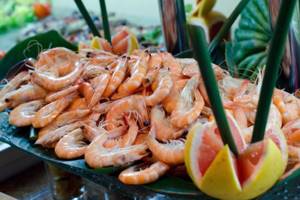
Many products containing selenium and zinc have contraindications.
Many people notice that vitamin complexes sold in pharmacies often contain both microelements nearby. They are connected by the fact that both substances have antioxidant properties, and also by the fact that selenium is part of enzymes, and zinc is involved in all processes with them.
When consuming products that contain selenium and zinc, you must take into account that some of them have contraindications. The presence of chronic pathologies and diseases in the acute period should be taken into account so as not to harm the body. It should also be understood that the content of substances in products (especially plant foods) largely depends on the method of their preparation.
For acne
For acne and pustular acne, Zincteral tablets are prescribed to dry the epidermis, reduce the extent of the lesion and heal it (post-acne). The dosage depends on the patient's age. So, adults are prescribed 1-2 tablets per day, and children 1 tablet per day. The course of treatment is determined individually in each specific case, depending on the degree of the pathological process.

Table of foods rich in zinc and selenium
The table provides a list of the main products that contain the maximum amount of zinc and selenium:
| Products | Zinc mg/100 g | Selenium µg/100 |
| Pine nuts | 4,65 | 7 |
| Walnuts | 2,8 | 4 |
| Beans | 2,2 | 8 |
| Pumpkin seeds | 7,44 | 30 |
| Sunflower seeds | 5,3 | 7 |
| Sesame seeds | 7,4 | 20 |
| Peanut | 6,6 | 7,3 |
| Chicken by-products | 7,2 | 40 |
| Rye bran | 4,2 | 50 |
Effect on the human body
Zinc regulates the activity of more than 200 enzyme structures, and also takes part in the formation of the most important hormones, neurotransmitters, and blood cells, creating favorable conditions for the body’s cells to function fully.
Biological significance of zinc: improves cognitive functions (attention, memory, mood); normalizes the functioning of the cerebellum and brain; increases the synthesis and hypoglycemic effect of insulin; increases the protective properties of neutrophils and macrophages, improving the immune status of the body; stabilizes blood sugar levels; regulates fatty acid oxidation reactions; improves visual acuity, taste perception, sense of smell (together with vitamin A); potentiates the synthesis of digestive enzymes; participates in the processes of hematopoiesis, respiration, deciphering information stored in genes; stimulates the regeneration of new tissues; regulates the activity of enzyme systems; activates bone formation and tissue regeneration; participates in the synthesis of sex hormones, increases sperm activity; accelerates the production of your own antibodies and antioxidants; maintains the concentration of tocopherol in the blood, facilitating its absorption; increases libido, increases potency; improves the functional condition of the skin, reducing acne and dryness; participates in the mechanisms of formation and decay of nucleic acids, protein and carbohydrate structures; accelerates the removal of toxic substances from the body, including excess carbon dioxide; participates in the mechanisms of muscle contractility; normalizes the transport “abilities” of hemoglobin; potentiates a decrease in nonspecific permeability of cell membranes.
Food sources
Given that zinc supports the health of the endocrine, immune and nervous systems, it is important to ensure a daily supply of the microelement to the body.
Table No. 1 “Natural sources of zinc”
| Product name | Zinc content per 100 grams of product, milligrams |
| Oysters | 60 |
| Wheat bran | 15 -16 |
| Veal liver (fried) | 15 |
| Eels (boiled) | 13 |
| Beef, lamb, pork | 7 – 9 |
| Sesame, poppy seed | 7,5 – 8 |
| Pumpkin seeds (unroasted) | 7,5 |
| Chicken hearts (boiled) | 7 |
| Pine nuts | 4 – 6,5 |
| Cocoa (natural) | 6,5 |
| Lamb liver (fried) | 6 |
| Sunflower seeds, flax seeds (unroasted) | 5,5 |
| Soy flour (coarse) | 4,8 |
| Beef tongue (boiled) | 4,7 |
| Soybeans, beans | 4,2 |
| Brazilian nut | 4 |
| Lentils | 3,8 |
| Kohlrabi cabbage | 3,5 |
| Wheat flour (whole grain) | 3 |
| Buckwheat, barley, oatmeal porridge | 2,5 – 3 |
| Peanuts, walnuts | 2,7 |
| Duck, turkey | 2,5 |
| Almonds, cashews, hazelnuts | 2,1 |
| Beans, peas | 1,6 – 2,5 |
| Dried apricots (without processing) | 0,75 |
| Prunes (unprocessed) | 0,45 |
| Green onions | 0,4 |
| Cauliflower, avocado, radish, carrots | 0,3 |
In addition, zinc is found in small quantities (up to 1 milligram per 100 grams of product) in almost all fruits, vegetables and berries. Remember, culinary processing of plant foods, including grinding cereals, leads to the loss of 50 - 80% of the mineral.
